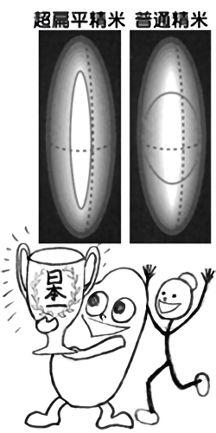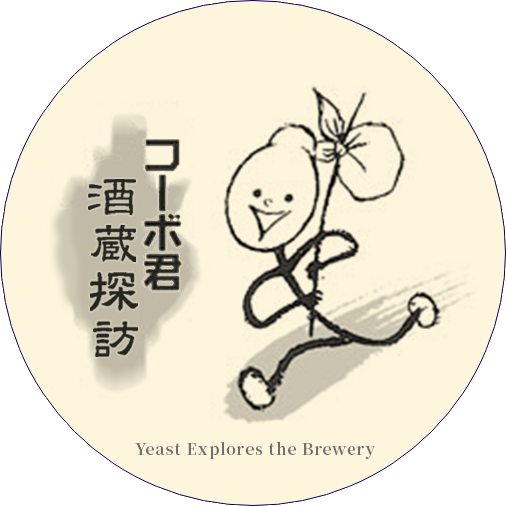| Yeast |
“Hi, Henpei (‘flat’). Long time no see. Today I’d like to learn about Daishichi’s rice polishing.” |
| Henpei |
“Fine, ask whatever you want.” |
| Yeast |
“Why is rice polishing necessary? Is the rice better the more it is polished?” |
| Henpei |
“No, not at all. When there are too many elements like proteins, lipids, ashes, vitamins, etc., in the outside layers of the rice, that can lead to off-flavors. But on the other hand you could also argue that that’s where the important individuality of the rice comes from. However, in order to bring out the clear and transparent taste and elegant aroma of kimoto junmai daiginjo, sufficient bran has to be removed.” |
| Yeast |
“So if the rice is polished in an uneven way, it will be spoiled?” |
| Henpei |
“Indeed. A good taste is not something you can force. By superimposing many hardly visible layers, one on the other, it must be produced in a natural way.” |
| Yeast |
“That sounds very difficult.” |
| Henpei |
“Sure. Look, do you remember what a clear blue lake looks like? Although it is so clear you can see the bottom, it is filled with a deep blue color. That is the taste of junmai daiginjo made with the kimoto method.” |
| Yeast |
“That’s quite mysterious.” |
| Henpei |
“Let’s look at junmai sake made with the kimoto method. It has umami that can’t be reached with the rice for junmai daiginjo. The components present in the rice are utilized much more.” |
| Yeast |
“So there should be no irregularities in polishing.” |
| Henpei |
“Yes. That’s why it’s important to opt for good rice, that is: special sake rice. Such rice originally has very few unwanted components.” |
| Yeast |
“Can’t you attain the same result with ordinary rice when you polish it enough?” |
| Henpei |
“Perhaps only when you prefer sake that tastes ‘dry and crisp’… But, on the contrary, it’s the umami that gives character to the sake. When you mature it for a long time, you can clearly see the difference between sake made with good rice and sake not made with good rice.” |
| Yeast |
“I understand. Can you tell me about the development of flat rice polishing?” |
|
 |
| Henpei |
“It was first proposed in an article by Tomio Saito, a technical official of the Japanese government.” |
| Yeast |
“What did he write?” |
| Henpei |
“With the conventional polishing method that makes round balls of the rice grains, the long ends of the oval grains are polished too much, and the thick part in the middle not enough – so essentially the bran is not sufficiently removed. To remove the bran effectively and evenly, it is necessary to polish the surface of the grain all around in the same thickness. And then the form of the polished grain naturally becomes flat.” |
| Yeast |
“So Daishichi immediately started using this method?” |
| Henpei |
“Yes, also because we wanted to give more elegance to the very powerful kimoto. Sake that combines those two qualities, power and elegance, is very rare.” |
| Yeast |
“It must have been like challenging a very steep mountain.” |
| Henpei |
“Yes, development was not so simple. It was a time of trial and error, where we relied on intuition. By straining our ears, we could hear the squeaking of the rice. We had the polishing machines work continuously for 150 hours, and we were so worried we came back to check at night.” |
| Yeast |
“That must have been a long and lonely struggle.” |
| Henpei |
“Our laboratory gave us important support. The results of the polishing were immediately evaluated, so that we could continue with the next step. We tried out various hypotheses, to see what the crux was, and finally we saw more and more results. The superflat rice polishing technique was born, resulting in flat grains surprisingly close to the ideal value Tomio Saito had calculated on paper. This meant the numbers of conventional rice polishing had become meaningless. Critical is the flatness. By monopolizing such prizes as the Award of the Director-General of the Science and Technology Agency, Excellent Technician Award of Fukushima Prefecture, and Brewing Technician Award of the Brewing Society of Japan, the polishing division of Daishichi became the background strongman for the brewers!” |





